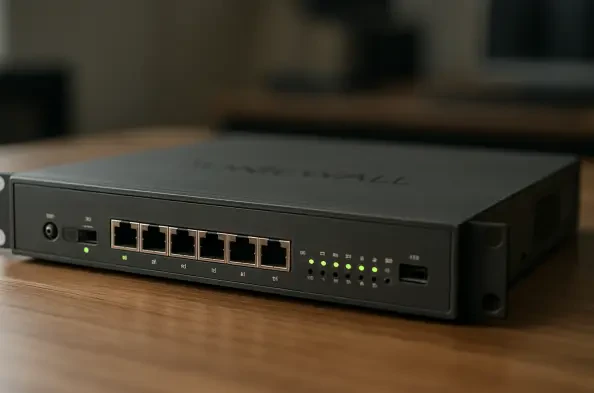Diving into the world of cybersecurity, we’re thrilled to sit down with Vernon Yai, a renowned data protection expert with a sharp focus on privacy protection and data governance. With years of experience in risk management and a passion for pioneering detection and prevention strategies, Vernon is a trusted voice in safeguarding sensitive information. Today, we’ll explore a recent high-profile incident involving a breach of cloud firewall backups, discussing the implications for security, the response from the affected company, and the broader lessons for data protection. Our conversation will touch on the nature of the breach, the risks of encrypted data exposure, and the critical steps organizations and users must take to mitigate such threats.
How did the recent SonicWall cloud backup breach come to light, and what was the initial impact as you understand it?
The breach came to public attention when SonicWall disclosed that an unauthorized party had accessed firewall configuration backup files for customers using their cloud backup service. Initially, the company downplayed the scope, suggesting it affected less than 5% of their customers. However, their latest updates reveal a much broader impact, with backup files for all cloud backup users potentially compromised. This is a significant escalation, as it means a vast number of firewall setups and sensitive configurations were exposed, even if encrypted.
What specific types of information were stored in these compromised backup files, and why does this raise alarms despite the encryption?
The backup files contained critical data like encrypted credentials, firewall rules, and routing configurations. While encryption offers a layer of protection, it’s not foolproof. Attackers with access to these files can attempt offline decryption over time, especially if the original passwords were weak. Beyond that, the configuration data itself provides a roadmap for targeted attacks, revealing how a firewall is set up and potentially exposing vulnerabilities that could be exploited, even without cracking the encryption.
Can you elaborate on the steps SonicWall has taken to address this incident and support their customers?
SonicWall has been proactive in notifying affected customers and partners, urging them to log into their accounts to check for impacted devices. They’ve also rolled out tools to help assess and remediate issues, alongside detailed guidelines for containment. On the infrastructure side, they’ve hardened their systems by adding stronger authentication controls, enhanced logging, and other security measures to prevent a recurrence. It’s a comprehensive response, but the effectiveness will depend on how quickly users act on the provided resources.
The company categorized affected devices into different priority levels. Could you explain what these classifications mean for users trying to prioritize their response?
Certainly. SonicWall labeled devices as ‘Active – High Priority’ if they have internet-facing services enabled, meaning they’re at immediate risk of exploitation and need urgent attention. ‘Active – Lower Priority’ applies to devices without internet-facing services, suggesting a reduced risk since they’re less exposed. Lastly, ‘Inactive’ devices are those that haven’t communicated with the system for over 90 days, implying they might not be in use, though they still warrant a check. These labels help users focus their efforts on the most vulnerable systems first.
What practical actions are being recommended for users to protect themselves following this breach?
SonicWall is advising users to log into their MySonicWall accounts to check if cloud backups exist for their registered firewalls. If backup details or serial numbers are listed, they should follow specific containment and remediation steps outlined by the company. For those who’ve used the cloud backup feature but don’t see all their serial numbers—or none at all—SonicWall has promised further guidance soon. The key is to act swiftly and verify the status of every device tied to the account.
From a technical perspective, what do we know about how this breach occurred, and what does it reveal about potential gaps in cloud security?
While SonicWall hasn’t disclosed specifics about the timeline or perpetrators, experts suggest a brute-force attack targeted their cloud backup API service, exploiting weaknesses like insufficient rate limiting or inadequate API protections. This allowed attackers to access a wealth of sensitive data. It highlights a critical gap in cloud security—vendors must implement robust controls around public-facing APIs and enforce stricter access policies to prevent such large-scale unauthorized access.
Looking at the bigger picture, what does this incident teach us about the risks of storing sensitive data in the cloud, even with encryption?
This incident underscores that the cloud, while convenient, isn’t inherently secure without rigorous safeguards. Encryption is a vital defense, but it’s not a silver bullet—especially if attackers can harvest data for offline analysis or use configuration details to craft targeted attacks. It’s a reminder that organizations must adopt a multi-layered security approach, including strong access controls, regular audits, and minimal data exposure. Trusting the cloud provider alone isn’t enough; users need to actively manage their own security posture.
What is your forecast for the future of cloud security in light of breaches like this one?
I believe cloud security will continue to evolve rapidly as breaches like this expose vulnerabilities and push both providers and users to adapt. We’re likely to see stricter regulations around API security and data storage, alongside greater adoption of zero-trust architectures to limit access. Innovations in encryption and real-time threat detection will also play a bigger role. However, the human element—training users and enforcing strong policies—will remain just as critical. The cloud isn’t going away, so the focus must be on making it as secure as possible through collaboration between vendors and their customers.






